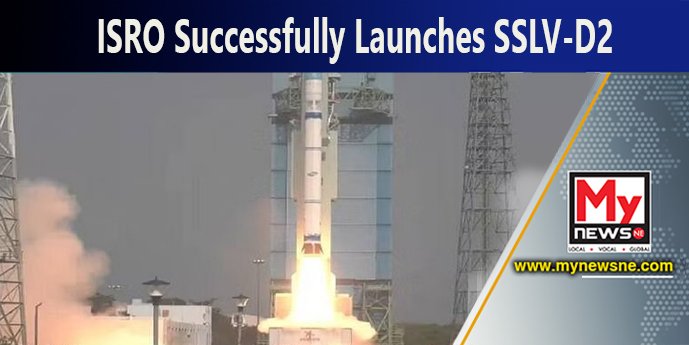SSLV-D2 Successfully Launched By ISRO
Guwahati: The Small Satellite Launch Vehicle (SSLV-D2) was successfully launched by the Indian Space Research Organization (ISRO) on Friday from Sriharikota in Andhra Pradesh.
Three satellites were on board the SSLV-D2. SSLV-D2 (D-Developmental flight number 2) launched from Sriharikota’s first launchpad at 9.18 a.m. today after a six-and-a-half-hour countdown that started at 2.48 a.m.
The SSLV rocket was carrying three satellites: the ISRO Earth Observation Satellite EOS-07, the US ANTARIS satellite Janus-1, and the Chennai-based Space Kidz India Company AzaadiSat-2. The ISRO designed SSLV with a carrying capability of 550 kg to Low Earth Orbit (LEO) based on the market trend towards smaller satellites.
The SSLV-D2 was transporting a total of 175.2 kilogrammes in addition to the 15.3 kg EOS-07, 10.2 kg Janus-1, and 8.7 kg AzaadiSAT-2. The SSLV rocket offers low-cost access to space, has a quick turnaround, is adaptable to carrying several satellites, and requires little in the way of launch infrastructure.
It is set up with a velocity terminal module and three solid propulsion stages. The SSLV rocket, which cost around Rs 56 crore, is 34 metres tall, has a two-meter diameter, and has a lift-off mass of 120 tonnes, according to ISRO.
According to ISRO, the mission’s goals are to inject three satellites — EOS-07, Janus-1, and AzaadiSAT-2 — into a 450 km circular orbit and test the specified payload capabilities of SSLV in LEO.
The SSLV rocket launched on schedule and ejected EOS-07 first, followed by Janus-1 and AzaadiSAT-2 later in the flight. All three satellites were launched at a height of 450 kilometres. The satellites were launched successfully by the rocket D2 from the tiny launch vehicle, according to the ISRO’s live webcast.
The SSLV’s inaugural flight, SSLV-D1, on 7.8.2022, was a failure due to the rocket’s placement of the two satellites, EOS-01 and AZAADISAT, in the incorrect orbit, which led to their loss.
“Congratulations to all 3 satellite teams for making the satellites as well as placing them in right orbit. We had analysed the problems faced in SSLV-D1, identified corrective actions and implemented them at a very fast pace to ensure the vehicle becomes successful this time,” said ISRO chief S. Somanath after the mission was accomplished.

